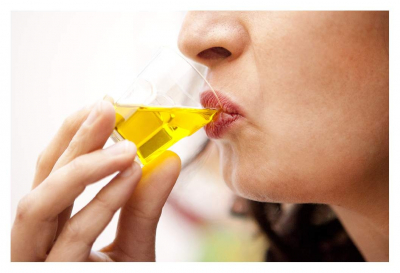The olive oil sensory evaluation
Choose A Flavour. Technical guide on the use of registered extra virgin olive oils. Sensory analysis is carried out by a “test panel”, i.e. an official tasting group of specialists qualified in using approved methods. A test panel is an essential tool for both checking oil quality highlighting the uniqueness of the end product

Using only chemical parameters is not sufficient for guaranteeing product quality. Unlike test panels for food, sensory analysis enables an in depth assessment of olive oil based on olfactory and tasting factors.
The oil sensory profile is related to enzymatic activities which are, by and large, governed by genetic factors, ripening state, mode of olive storage and oil extraction parameters.
Through sensory evaluation, specialists are able to recognize different fruit and vegetable aromas based on the variety of olive and its geographical origin. They can identify tomato, apple, artichoke, and almond aromas.
With specific regard to PDO oil, test panels have a double purpose:
– to ensure there are no defects, as a PDO oil is primarily an extra virgin olive oil;
– to ascertain compliance with the Production Quality Scheme, that is the outcome of all sensory attributes which indicate a high standard of production that constitutes a unique, specific and traditional oil.
The tasting techniques
According to Reg. (EC) n. 640/2008, “test panel” is the method for evaluating and grading virgin olive oils on the basis of the intensity of positive and negative attributes, as determined by a group of tasters (from 8 to 12) selected, trained and monitored as panels.
Each tester work in a single booth and, after smelling and tasting the oil sample, he scores the intensity of the different attributes (positive or any negative) listed in the profile sheet on 100 mm scales. The statistic analysis of the panel results allows the oil classification.
Virgin olive oils are graded by comparing the median value of the defects (Md) and fruitiness (Mf) with the reference ranges given below:
– Extra virgin olive oil: Md =0 e Mf>0
– Virgin olive oil: 00
– Lamp olive oil: Md>3,5 o Md≤3,5 e Mf>0
For determining PDO oils sensory profile, the methodology approved by International Olive Oil Council (IOC) consists in adopting, for each PDO product, a specific profile sheet made up using sensory descriptive items which distinguish a certain production.
During the sensory evaluation, the oil colour is not taken into account. The tasting glass is dark – as avoid the judgment can be affected by the colour perception. In fact, in normal conditions oil colour is not be considered a quality parameter.
It can range from a light yellow to a rich green colour depending on many factors such as the olives ripeness, cultivar, extraction and processing method. It is not possible, looking at the colour, to understand the quality.
1.
Put some oil in the glass and lightly warm it, covering the top of the glass.
2.
Smell the oil, first briefly, then more deeply trying to capture the different aromas.
3.
Sip a small quantity of oil (about 3 ml) trying to keep it in front of your mouth between your lower lip your tightly shut teeth.
4.
Breathe in through clenched teeth, first delicately, then more vigorously, so as to vaporize the oil inside the mouth and the sides of the tongue, where the taste buds are.
5.
While trying to identify and catalogue all the different aromas and flavours, exhale from the nose so that vaporized oil particles can reach the nasal membrane giving even more precise sensations.
6.
Once tasting is completed, oil can be expelled.
To comment you have to register
If you're already registered you can click here to access your account
or click here to create a new account


Comment this news